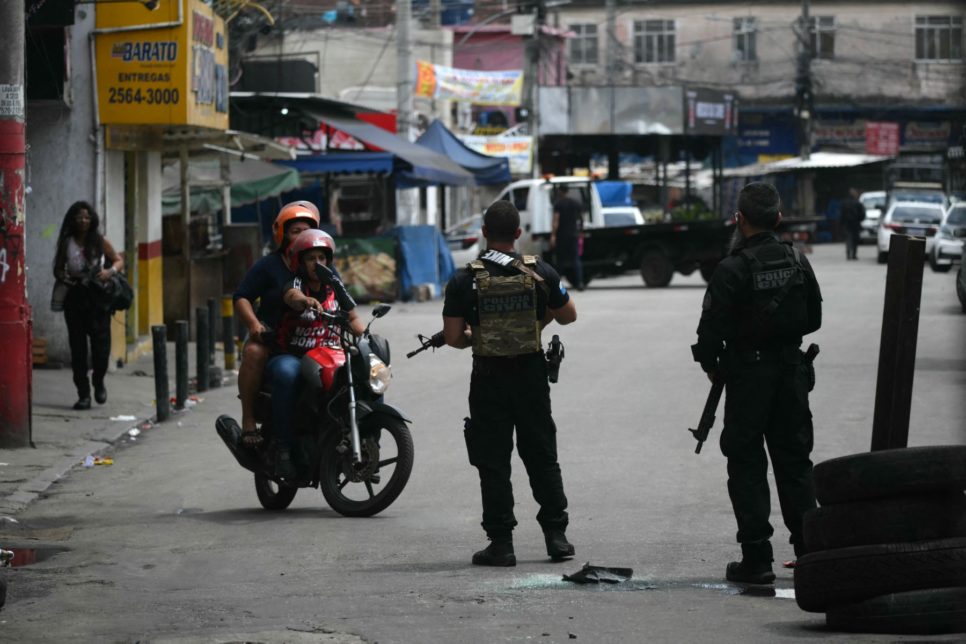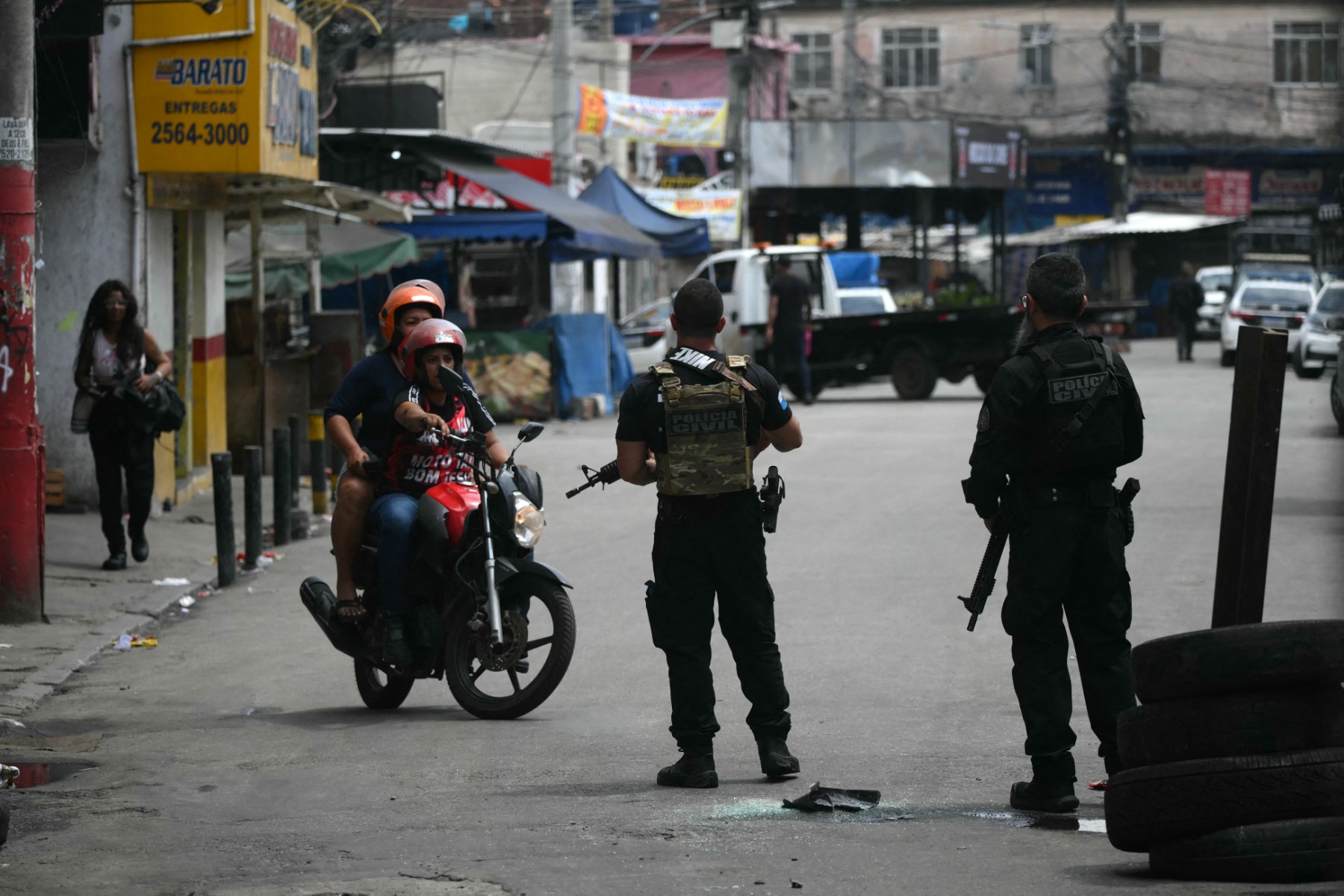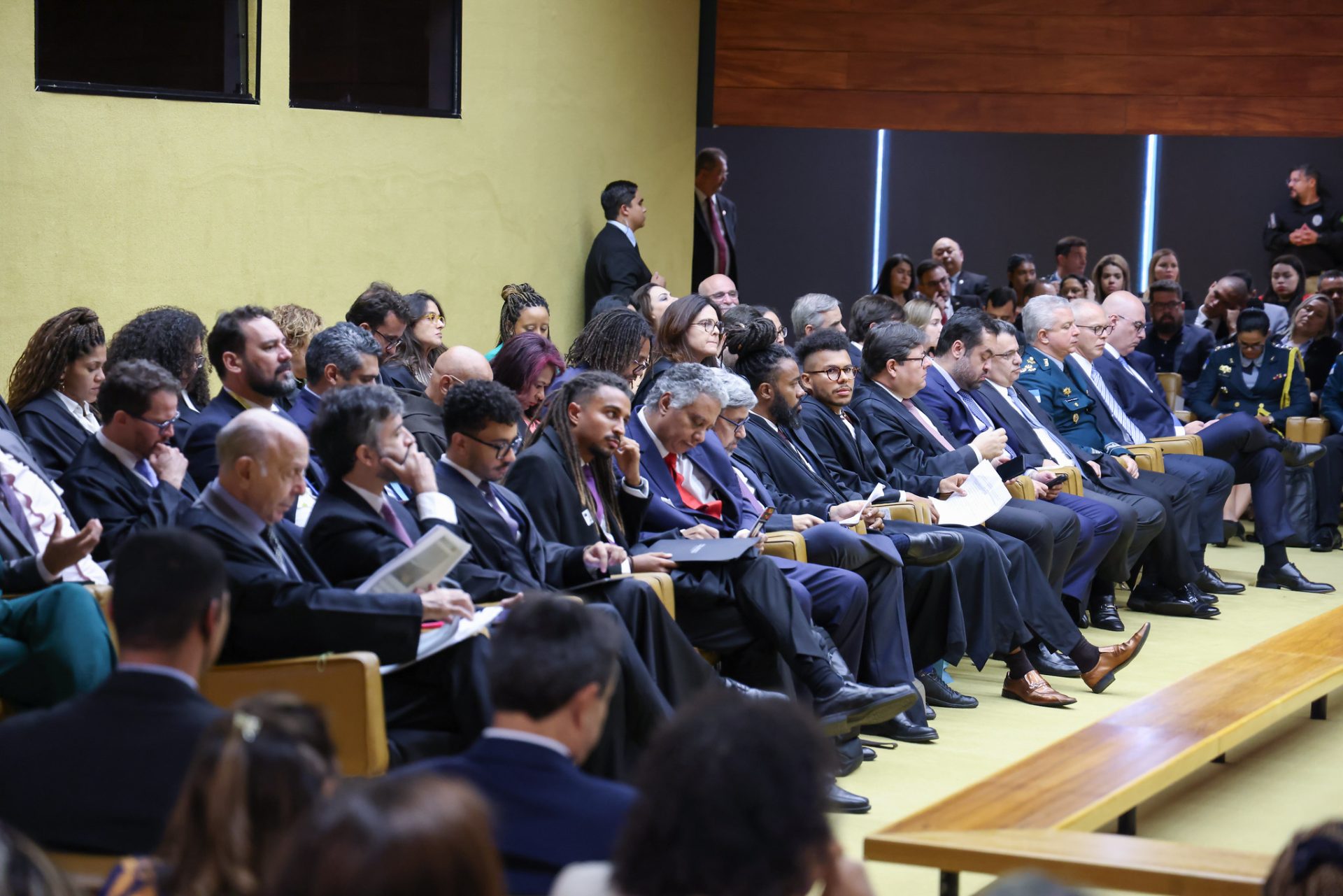Climate and Human Rights Glossary – Part 2
Research shows that more than half of the Brazilian population has not heard of COP30; the Climate and Human Rights Glossary explains some key concepts of the climate debate
 Indigenous children play in the Solimoes River during the Alvaraes Indigenous Intercultural Games and Dances. Photo: Michael Dantas / AFP
Indigenous children play in the Solimoes River during the Alvaraes Indigenous Intercultural Games and Dances. Photo: Michael Dantas / AFP
Just a few weeks ahead of the COP30 climate conference in Brazil, it remains relatively unknown to a large portion of the population. A survey by Ipsos-Ipec revealed that, although 64% of Brazilians support the event, 55% say they have no information about it.
Meanwhile, discussions on climate and human rights are gaining ground. What is the relationship between the climate emergency and people’s lives? To join the discussion, read the second part of the Climate and Human Rights Glossary—a new selection of entries featuring key expressions used in discussions on climate justice in Brazil and around the world. See below:
Low-Carbon Economy: an economic model that seeks to significantly reduce greenhouse gas emissions (GHG) by decoupling economic growth from the intensive use of fossil fuels and other polluting practices. It promotes the use of renewable energy, energy efficiency, sustainable management of natural resources, and technological innovation. It is not merely a matter of “decarbonizing” production but also of rethinking value chains, consumer habits and investments, redirecting them to sectors and technologies that minimize environmental impact and contribute to climate resilience. The transition to a low-carbon economy involves restructuring industries, creating new markets and adapting public policies, with due attention to social justice to ensure a fair transition that does not penalize vulnerable communities.
Read more
Environmental Education: an ongoing and continuous process of learning, which aims to equip individuals and communities to be aware of both the global and local environmental issues. Its purpose is the development of the knowledge, skills, values, attitudes, and abilities needed to understand the complex relationships between human beings and the environment. Environmental Education promotes critical thinking about development and consumption patterns, seeking to change individual and collective behavior to benefit environmental preservation and restoration. In the context of human rights, Environmental Education is key in equipping people to demand their right to a healthy environment and to participate in decisions that affect their surroundings.
Climate Education: teaching and learning about the causes, impacts, and solutions related to climate change. Unlike Environmental Education in its broader sense, Climate Education goes deeper into concepts such as the greenhouse effect, greenhouse gases, global warming, mitigation, adaptation, climate justice, and international climate policies. Its objective is to equip individuals and communities to understand the urgency of the climate crisis, to develop critical thinking about climate disinformation, and to be proactive in addressing the challenge. It seeks not only to inform but also to engage society in concrete actions, promoting resilience and the capacity to adapt to climate change, as well as encouraging advocacy for more ambitious policies.
Greenhouse Gas Emissions (GHG): the release of these gases into the atmosphere. The main ones are carbon dioxide (CO2), methane (CH4), nitrous oxide (N2O), and fluorinated gases (HFCs, PFCs, SF6, NF3). They absorb and retain heat, a natural phenomenon (the greenhouse effect) that is essential for keeping the planet at a habitable temperature. However, since the Industrial Revolution, human activities such as burning fossil fuels (for energy, transportation, and industry), deforestation, intensive agriculture and livestock farming, and inadequate waste management have drastically increased GHG concentrations. This increase intensifies the greenhouse effect, causing global warming and climate change. Reducing GHG emissions is the primary strategy for mitigating global warming, as outlined in international agreements, such as the Paris Agreement.
Fossil Fuels: non-renewable sources of energy formed over millions of years from the decomposition of buried organic material (plants and animals) under high pressure and temperature. The main examples are coal, oil, and natural gas. These sources of energy have underpinned the global economy since the Industrial Revolution and have been widely used for electricity generation, heating, transportation, and as raw materials for various chemical products and plastics. Burning fossil fuels is the largest contributor to carbon dioxide emissions (CO2) and other greenhouse gas emissions in the atmosphere, making them the primary driver of climate change. Furthermore, the extraction and transportation of fossil fuels often results in significant environmental impacts, such as deforestation, water and soil pollution, and accidents with spillage. The transition to more sustainable sources of energy is essential for the health of the planet.
Renewable Energy: energy sources harvested from natural processes that are continuously regenerated (solar, wind, hydropower, biomass, geothermal, and tidal energy). They are considered to be cleaner and more sustainable than fossil fuels, emitting fewer greenhouse gases (GHGs) and causing less environmental impact. However, the development of large renewable energy projects can have significant impacts on local communities, especially when licensing, consultation processes, and respect for rights are ignored.
One example is the case of the Quilombola Community of Serra dos Rafaéis, in the Chapada do Araripe (Piauí), which has experienced negative impacts following the installation of wind farms in the region. Residents report an increase in dust, constant noise from the turbines, cracks in their homes, damage to cisterns, as well as health problems and reductions in their quality of life. The energy generated in these projects is mostly allocated to major urban centers, offering no direct benefit to the affected communities. Fair energy transition requires respect for human rights, meaningful social participation, and tangible benefits for the communities that are impacted.
Climate Finance: financial resources from public (national and multilateral), private, and alternative sources to support the mitigation and adaptation efforts of developing countries to climate change. This lies at the heart of international climate negotiations (the United Nations Framework Convention on Climate Change, the Paris Agreement) and recognizes the historical responsibility of developed countries and the need to support developing nations, which are more vulnerable and have fewer resources. Mitigation is aimed at reducing emissions (e.g., renewables); adaptation helps communities and ecosystems adjust to impacts (e.g., early warning systems, resilient infrastructure). The volume, accessibility, and adequacy of climate finance are key points of discussion, crucial for developing countries to meet their targets and protect affected communities.
Climate Governance: a set of structures, processes, institutions, norms, and decision-making mechanisms that guide and coordinate the collective response to climate change at different levels—global, national, regional, and local. It involves not only governments but also civil society, the private sector, academia, and international organizations.
At the global level, climate governance is exemplified by the United Nations Framework Convention on Climate Change (UNFCCC) and its agreements, like the Paris Agreement, which establish the rules for international cooperation. At the national level, it involves the creation of laws, public policies, action plans, regulatory institutions, and monitoring mechanisms to implement climate targets. Good climate governance is characterized by transparency, participation, accountability, and justice, ensuring that climate decisions are legitimate, effective and equitable, safeguarding the rights of those most affected and ensuring their voices are heard in the development and implementation of policies.
Greenwashing: a deceptive marketing practice in which companies, organizations, or governments make false, vague, or exaggerated claims about environmentally sustainable efforts or products. The aim is to create a positive image, divert attention away from unsustainable practices or draw environmentally conscious consumers. It appears in ambiguous terms (“natural”, “eco-friendly”), the omission of information, false certifications and publicity based on a single “green” element whilst the rest of the operation is harmful. For example, a fossil fuel company may make a small investment in renewables, but spend millions on marketing to give the impression it is “green”, while continuing polluting activities. Greenwashing misleads the public, erodes confidence in real initiatives, delays climate action, and contributes to disinformation. It is essential to combat this to allow for transparency, informed decisions and genuine environmental accountability.






